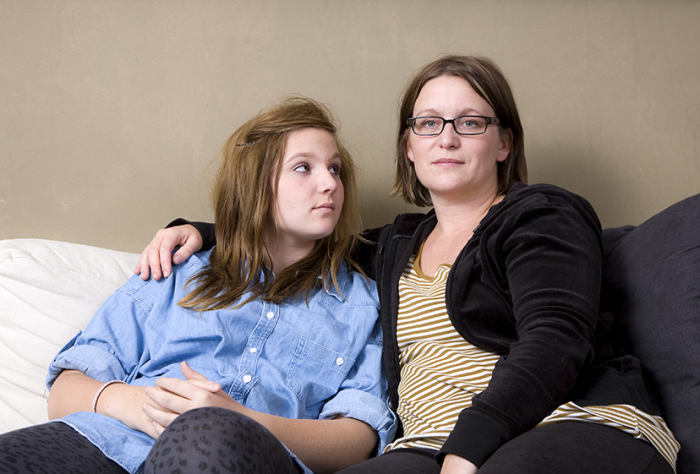As an educator, you probably feel, at least sometimes, totally depleted and stressed. The demands of your job are herculean, and in meeting them you are accountable to administrators, the strategic plans of your school system or organization, state laws and standards, national laws and standards, parents, and your students. Perhaps the best argument for attending to and strengthening your relationships with your students is a putatively selfish one—your own well-being.
According to clinical social workers Britt Rathbone and Julie Baron, authors of What Works with Teens: A Professional’s Guide to Engaging Authentically with Adolescents to Achieve Lasting Change, student-teacher relationships are often mentioned as one of the core reasons for staying in the profession (Hargreaves, 1998; O’Connor, 2008). There is a strong body of evidence to support the notion that social capital—expectations and interactions that promote trust, respect, value, and collaboration—has a significant impact on the quality of the learning environment and, specifically, the well-being of both students and staff (Roffey, 2012; Lopez & Sidhu, 2013).
Social capital provides the room for trust and patience, making possible what before seemed impossible. When you give adolescents the benefit of the doubt, assume their intentions are pure and legitimate (even if the resulting behavior misses the mark), and offer a new opportunity to move forward after each transgression, you will begin to see them returning the goodwill and trusting that you “have their back.” When you have social capital with your students, if you ask them to come in and see you for extra help, they are likely to actually show up. Isn’t that pretty much what educators are doing with adolescents in their work every day—trying to achieve what at times feels totally out of reach? When both parties are feeling valued and understood, there is a greater sense of well-being for all involved.
There is increasing recognition of the importance of the adolescent voice in providing feedback on their own learning experiences. A Gallup Student Poll, which began in 2012, will track through 2022 the hope, engagement, and well-being of public school students in grades five through twelve across the United States.
A recent study by U.S. News and World Report and the American Institutes for Research, examining which high schools are the best in America, used the Gallup Student Poll to compare its findings on student engagement with the top-ranked schools for academic performance and college readiness. The study’s results indicated a correlation between student engagement and academic success: Engaged students—those with emotional connections to their schools—were more likely to attend class and participate actively in learning. And districts that ranked in the top level of student engagement tended to rank just as highly for academic success and college readiness (Hodges & Lopez, 2013).
Such findings provide further evidence for the link in Gallup research between students having higher hope and higher high school grade point averages, graduation rates, and measures of college success. Research also highlights the fact that strong student-teacher relationships promote well-being in both students and teachers, that the relationship leads to student engagement (Roffey, 2012), and that increased student engagement leads to better academic outcomes (Hodges & Lopez, 2013).
So if the importance of the relationship between students and educators is so well established, why is it that training and discussion on how to build this crucial relationship is so lacking? The good news is that more and more school systems nationwide are beginning to understand that elements of relating are necessary skill sets for future success in academic settings and in the workplace. Many are looking to tenets of Social Emotional Learning (SEL) to guide future education initiatives and strategic planning.
The Collaborative for Academic, Social, and Emotional Learning (CASEL) offers much data, indicating that SEL improves academic performance, reduces negative behaviors, and improves students’ attitudes toward school. If your school system has already adopted an SEL program, jump on the bandwagon. If your school system has not yet embraced this valuable vehicle for learning, Rathbone and Baron recommend speaking to someone in a position to implement it.
The Positive Coaching Alliance, launched in 1998 by founder and CEO Jim Thompson, supports coaches in “working to provide all youth and high school athletes a positive, character-building youth sports experience,” as they put it in their mission statement. Their motto is “Better Athletes, Better People.” These efforts at changing the culture of sports rely heavily on the personal attributes, skill sets, and leadership of coaches to effectively reach and motivate young athletes. So again, it is the relationship that serves as the critical means to a productive end with teens on the field, on the court, in the pool, or on the rink.
For more information check out Britt Rathbone, MSSW, LCSW-C, and Julie Baron, MSW, LCSW-C’s What Works with Teens.
References
Hargreaves, A. (2000). Mixed emotions: Teachers’ perceptions of their interactions with students. Teaching and Teacher Education, 16, 811–826.
Hodges, T., & Lopez, S. J. (2013, May 17). How high schools win the gold medal in academic performance. Retrieved from: http://thegallupblog.gallup.com/2013/05/howhigh- schools-win-gold-medal-in.html
Lopez, S., & Sidhu, P. (2013, March 28). Teachers love their lives, but struggle in the workplace: Teachers rank eighth out of fourteen occupation types in rating their work environment [Blog post]. Retrieved from http://www.gallup.com/poll/161516/teachers-love-lives-struggle-workplace.aspx
O’Connor, K. E. (2008). You choose to care: Teachers, emotions, and professional identity. Teaching and Teacher Education, 24, 117–126.
Roffey, S. (2012). Pupil wellbeing-teacher wellbeing: Two sides of the same coin? Educational and Child Psychology, 29(4), 8–17.


 2024 Peace Playbook: 3 Tactics to Avoid Clashes with Your Partner
2024 Peace Playbook: 3 Tactics to Avoid Clashes with Your Partner